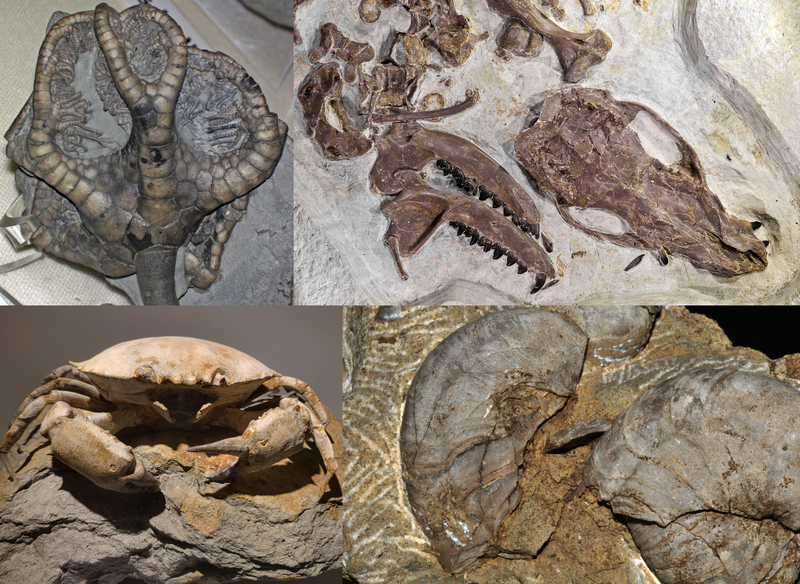Where Dinosaurs in the Precambrian Era: Myth Debunked!
Dinosaurs did not exist during the Precambrian Era. The era concluded before dinosaurs emerged.
Dinosaurs, the captivating prehistoric creatures that still capture our imagination, roamed the Earth long after the Precambrian Era ended.
Marking the span of time from Earth’s formation around 4. 6 billion years ago until approximately 540 million years ago, the Precambrian represents a vast period before complex life forms arose.
Dinosaurs made their grand entrance in the subsequent Mesozoic Era, particularly during the Triassic period around 230 million years ago.
Understanding when dinosaurs existed helps us appreciate the immense scale of Earth’s geological and biological history while sparking fascination in both amateur enthusiasts and professional paleontologists alike.
Looking into this fascinating timeline of life, we learn more about the dynamic changes our planet has undergone through the eons.

The Timeline Confusion
The Timeline Confusion often stirs a whirlwind of curiosity and myth. Many people think dinosaurs lived in the Precambrian era.
This concept strays far from the actual chronology of life on Earth. Understanding when dinosaurs roamed is vital for any history buff or paleontology enthusiast. Let’s clarify the timeline and bust some myths around the existence of these incredible creatures!
The Geologic Time Scale
Our planet’s history divides into sizable chunks of time called ‘eras’. These eras further break down into periods and epochs.
Scientists use rocks and fossils to mark these times. The Geologic Time Scale helps us navigate Earth’s 4.6-billion-year story.
- Precambrian: The beginning of time until 541 million years ago
- Phanerozoic: Starts right after the Precambrian and continues to this day
Within the Phanerozoic, we have three eras:
- Paleozoic
- Mesozoic – the Age of Dinosaurs
- Cenozoic – after the dinosaurs
Dinosaurs appeared in the Mesozoic era, not the Precambrian era.
Common Misconceptions About Dinosaurs’ Existence
The public often holds inaccurate views about dinosaurs and time. Some imagine that all prehistoric creatures, including dinosaurs, existed together. This isn’t true. Dinosaurs emerged around 230 million years ago.
| Era | Notable Events |
|---|---|
| Precambrian | Earliest life starts; no dinosaurs |
| Mesozoic | Dinosaurs dominate |
| Cenozoic | Mammals rise; no dinosaurs |
Fun Fact: Dinosaurs lived much closer in time to humans than to the earliest life forms of the Precambrian era.
Always remember, context and precise timelines are essential when exploring Earth’s prehistoric past!

Credit: en.wikipedia.org
Precambrian Era Explained
The Precambrian Era marks a vast period of time in Earth’s history.
It stretches from the formation of the Earth around 4.6 billion years ago to the emergence of complex life forms known as the Cambrian Explosion, about 541 million years ago.
Our planet transformed drastically during this era, setting the stage for life as we know it.
Life Before Dinosaurs
Long before the first dinosaur footprints were ever made, the Precambrian Earth was teeming with life.
Microbial mats and simple unicellular organisms dominated the oceanic world.
- Stromatolites – Fossil evidence of Earth’s early life found in ancient rocks.
- Single-celled life – Ancestors to all life on Earth, like bacteria and algae.
Characteristics Of The Precambrian World
Hidden beneath layers of ancient rock, the Precambrian world’s characteristics whisper tales of our planet’s youth.
The atmosphere and oceans evolved continually, creating a cradle for early life.
| Atmosphere | Oceans | Landforms |
|---|---|---|
| Lacked oxygen | Waters rich in iron | Continents began to form |
| Rising oxygen levels (Great Oxygenation Event) | Marine diversity increases | Formation of the supercontinent Rodinia |
Rise Of The Dinosaurs
The earth’s history brims with tales of formidable creatures that roamed the planet. Dinosaurs are among the most thrilling characters in this ancient narrative.
The rise of dinosaurs marks a significant period in the Earth’s history, sparking curiosity and awe for generations. Understanding their emergence begins with exploring the time frames they inhabited.
The Mesozoic Era Birth
The Mesozoic Era – known as the ‘Age of Reptiles’ – introduced the dinosaurs. This era is divided into three key periods:
- Triassic – approximately 252 to 201 million years ago
- Jurassic – about 201 to 145 million years ago
- Cretaceous – roughly 145 to 66 million years ago
Dinosaurs first appeared in the Triassic period. They thrived and evolved into diverse species by the Jurassic and reached their peak during the Cretaceous.
Transition From Precambrian To Phanerozoic
The transition from the Precambrian to the Phanerozoic Eon marks a stark contrast in life on Earth. The Precambrian represents a vast span of time before complex life forms appeared.
| Era | Timeline | Main Events |
|---|---|---|
| Precambrian | 4.6 billion to about 541 million years ago | Earth’s formation and early life such as bacteria |
| Phanerozoic | About 541 million years ago to present | Complex life, including fishes, plants, and eventually dinosaurs, emerges |
Dinosaurs did not exist during the Precambrian. Their reign came much later with the rise of the Phanerozoic Eon.
Debunking The Myth
The idea of dinosaurs roaming the Earth during the Precambarian era sparks curiosity. Yet, it’s a myth needing clarification. Let’s explore why this concept doesn’t align with scientific understanding.
Contrasting Timelines
The Precambrian era predates dinosaurs by ages. This time extended from Earth’s formation up to 541 million years ago. Dinosaurs emerged much later, dominating the Mesozoic era, specifically from approximately 230 to 66 million years ago.
- Precambrian: Earth’s formation to 541 million years ago.
- Mesozoic era: 230 to 66 million years ago.
The myth muddles these distinct timeframes. It suggests a coexistence that’s not factual. Dinosaurs and the Precambrian era are separated by a vast stretch of time.
Paleontological Evidence Against The Myth
Fossils tell Earth’s history. They show no sign of dinosaurs in Precambrian rocks. Fossils from this era often feature simple, single-celled organisms.
| Time Period | Dominant Life Forms |
|---|---|
| Precambrian | Single-celled organisms, algae |
| Mesozoic | Dinosaurs, early mammals |
Comprehensive digs and studies across the globe solidify that dinosaur fossils are absent from Precambrian strata. This lack of evidence busts the myth of their existence in this period.
Impact Of Misinformation
The Impact of Misinformation concerning dinosaurs and their place in history can lead to a significant misunderstanding of scientific facts. Some people believe dinosaurs roamed the Earth during the Precambrian Era. This is not true.
Dinosaurs appeared much later, in the Mesozoic Era. Let’s explore the consequences of such falsehoods and how they persist.
Educational Implications
Misconceptions about dinosaurs can have dire effects on education. Students might learn incorrect timelines and facing muddled historical narratives.
Teachers play a crucial role in correcting these false notions. Accurate teaching aids ensure students grasp the correct chronology.
- Key topics such as:
- The real age of dinosaurs
- Differences between geological eras
- Fossil evidence and its dating
Such topics require clear explanations. Interactive activities like fossil dating exercises can help demystify geological timelines.
The Role Of Pop Culture In Spreading Myths
Pop culture often prioritizes a good story over facts. Movies, books, and shows sometimes place dinosaurs in incorrect time periods. This creates memorable, yet scientifically inaccurate, images in people’s minds.
| Pop Culture Reference | Myth Created | Actual Fact |
|---|---|---|
| The Land Before Time | Dinosaurs coexisted with humans | Humans and dinosaurs never met |
| One Million Years B.C. | Dinosaurs lived in the Precambrian | Dinosaurs appeared in the Mesozoic Era |
Insightful discussions can stem from these pop culture references. They provide teachable moments to correct misconceptions.
Current Understanding Of Dinosaur Evolution
The history of dinosaurs is a journey through time. Dinosaurs lived long after the Precambrian Era. They emerged in the Triassic period. This was about 230 million years ago.
Scientists have worked hard to understand dinosaurs. Fossils help them learn when and where dinosaurs lived. These ancient creatures had a variety of forms and sizes.
Recent Discoveries
New fossils found help us see new dinosaur species. Some were as small as chickens, others larger than buildings. Each discovery adds pieces to the puzzle of dinosaur life.
- Fossil beds in Argentina and China have been essential.
- New technology like CT scans reveal secrets inside the bones.
Clarifying Dinosaur Evolutionary Timeline
Scientists use fossils to make a timeline. This shows us how dinosaurs changed over time. New methods even show us their colors and feathers.
| Period | Years Ago | Notable Dinosaurs |
|---|---|---|
| Triassic | 230-200M | Eoraptor, Herrerasaurus |
| Jurassic | 200-145M | Stegosaurus, Allosaurus |
| Cretaceous | 145-66M | Tyrannosaurus, Triceratops |
A clearer picture of dinosaur evolution amazes and educates us. Every fossil discovery brings us closer to understanding these ancient giants.
Frequently Asked Questions Of Where Dinosaurs In The Precambrian Era
Did Dinosaurs Live In The Precambrian Era?
No, dinosaurs did not live in the Precambrian era. They appeared much later, in the Mesozoic era.
What Animals Lived In The Precambrian Era?
During the Precambrian era, single-celled organisms like bacteria and algae dominated. Simple multicellular animals emerged later, including sponge-like creatures.
Which Era Did The Dinosaurs Appear?
Dinosaurs first appeared during the Mesozoic Era, specifically in the Triassic period around 230 million years ago.
What Geological Time Did Dinosaurs Live In?
Dinosaurs lived during the Mesozoic Era, which spanned from about 252 to 66 million years ago. This era includes the Triassic, Jurassic, and Cretaceous periods.
Conclusion
Diving into Earth’s deep history reveals a truth; Dinosaurs did not roam the Precambrian era. This ancient period set the stage for complex life, but only much later did the majestic dinosaurs emerge.
As we’ve explored, understanding these timelines enriches our grasp of Earth’s evolutionary tapestry.
Let’s marvel at the wonders of prehistoric life, properly placed in the chapters of time where they truly belong.


